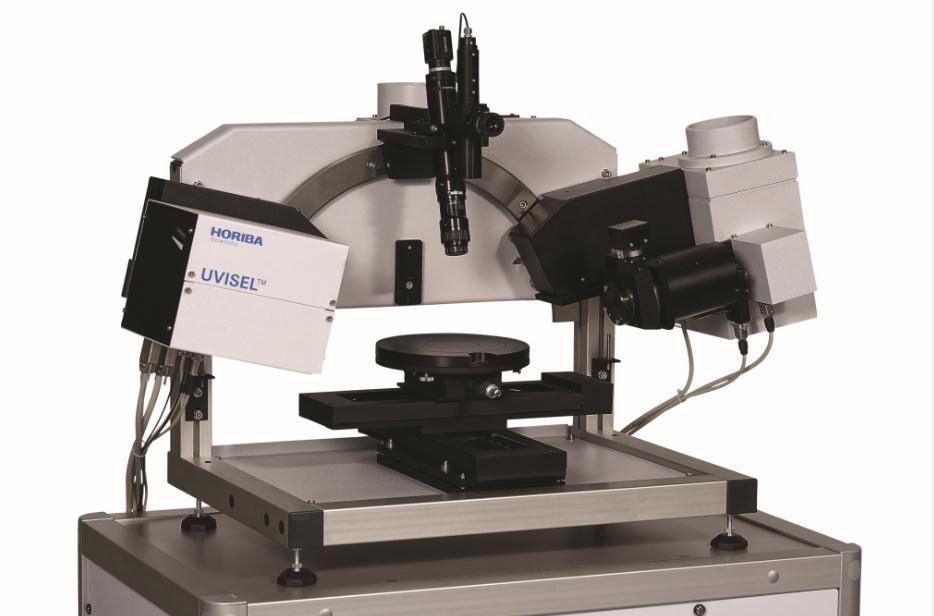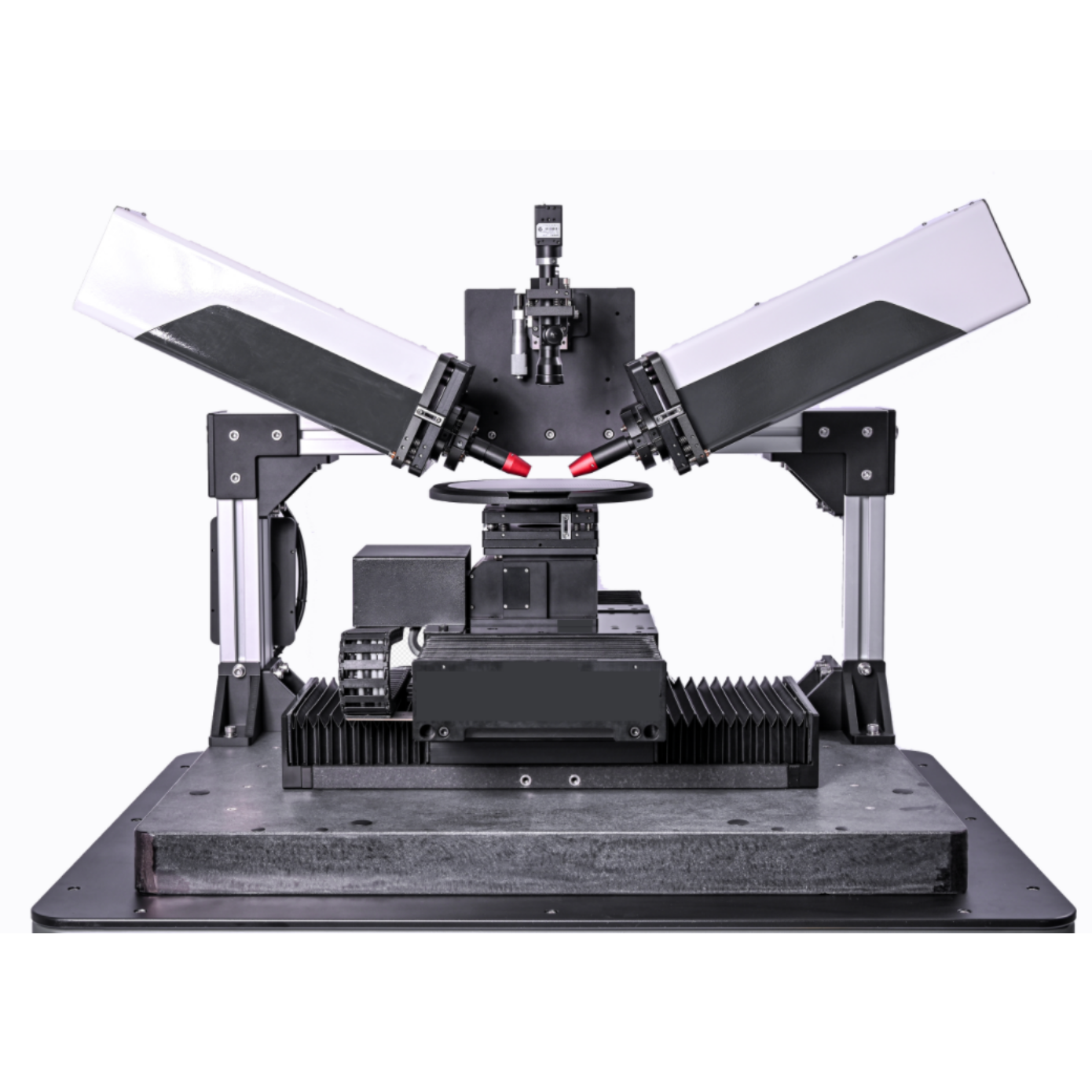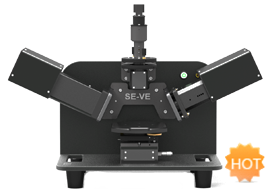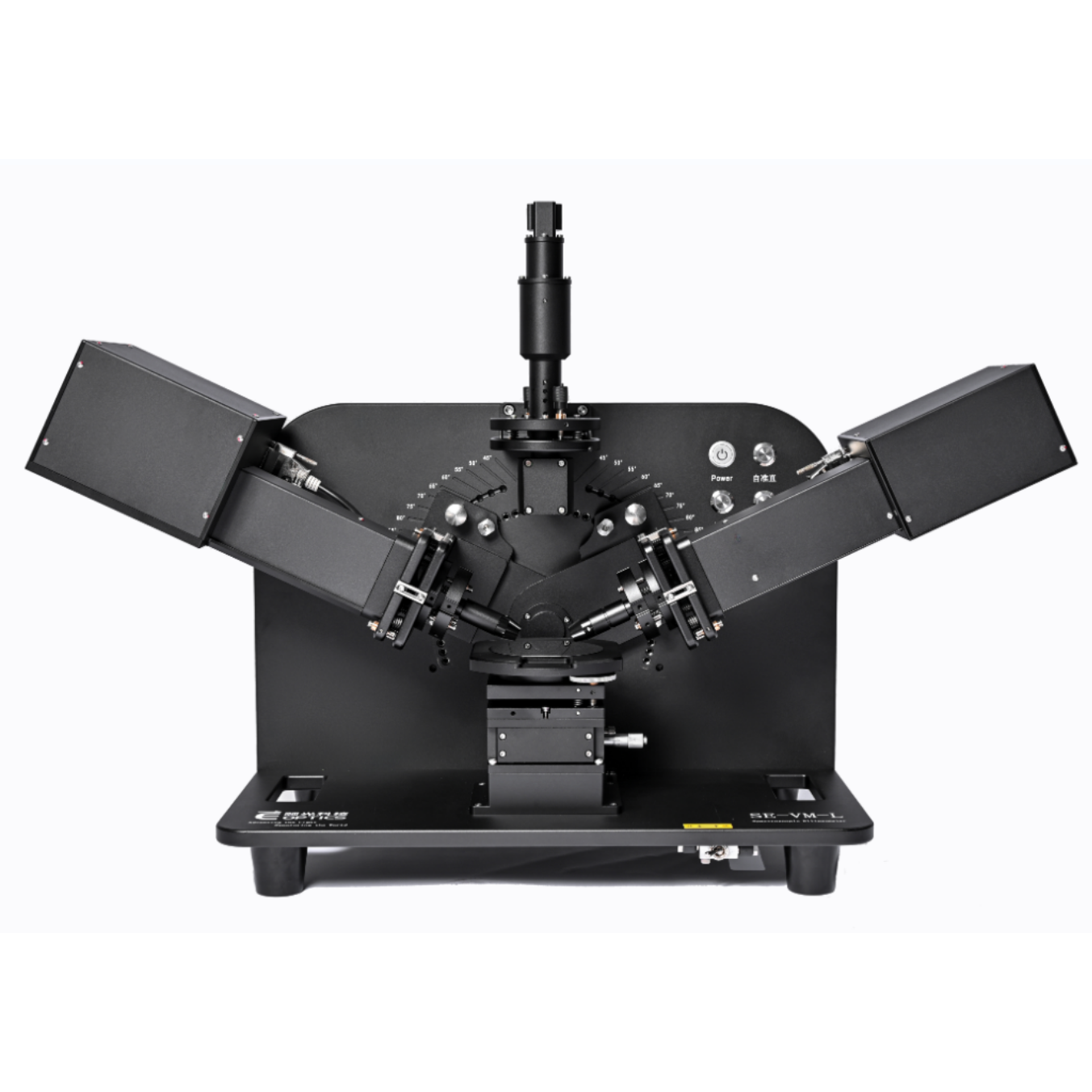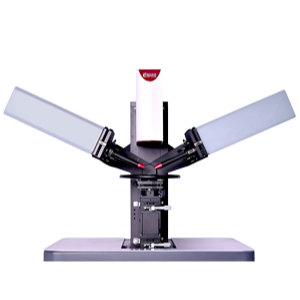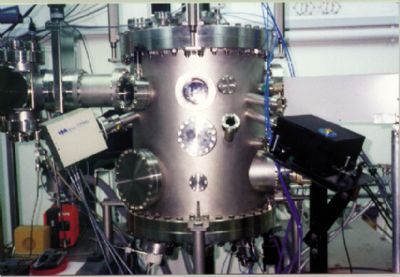方案详情
文
The sensitivity of Spectroscopic Ellipsometry is such that characterisation of different doping concentrations of Al in ZnO is possible. Further to this the UVISEL PMSE allows the highest sensitivity and precision of the ellipsometric angles across the full range [0°, 360°], even when ' is close to 0°, and this performance is essential when characterising thin transparent films
方案详情

Application NoteOptical CoatingsUVISELSE12Spectroscopic Ellipsometry Spectroscopic Ellipsometry Spectroscopic Ellipsometry study of ZnO thin films Celine Eypert in collaboration with Lamia Znaidi from the CNRS -LIMHP-Paris 13 University The demand for low cost, high performance optoelectronic devices leads to the development of more efficienttransparent conductive oxide (TCO) thin films as transparent electrodes for thin film solar cells, photothermalconversion systems, gas sensors, optical position sensors, acoustic wave transducers, liquid-crystal displays,etc... From all the TCO materials studied during recent years,zinc oxide (ZnO) has emerged as one of the most promis-ing materials due to its optical and electrical properties, itshigh chemical and mechanical stability and, owing to itsabundance in nature, it is a lower cost material comparedwith the most currently used TCO materials ITO andSnO2. However, undoped ZnO thin films are not stable,especially at high temperatures. Doping the zinc oxide canreduce this disadvantage. Additionally doping leads to anincrease in the conductivity of the ZnO thin films.DopingofZnO is achieved by replacing Zn2+ atoms with ele-ments of higher valency such as indium, aluminium, andaallium.1. These type of oxide materials can be produced by severaltechniques such as sputtering, thermal evaporation, spraypyrolysis, electrodeposition or sol-gel methods.In this study Phase Modulated Spectroscopic Ellipsometry(PMSE) was used to characterise material properties suchas thickness and optical properties. Sample preparation ZnO thin films were prepared by the sol-gel method. Zincacetate dihydrate was used as starting material and dis-solved in ethanol and monoethanolamine as a solventand complexing agent, respectively. For doped films, alu-minium nitrate was used and the Al/Zn molar ratio wasvaried from 1 to 3%. The precursor solution was depositedby up to nine separate spin coating procedures at3000 rpm for 30s, according to the intended number oflayers. Doped and undoped films were preheated at300℃ (10min) after each coating and finally, heat treatedat 550℃ for 2 hours. [Prepared by LIMHP -Paris 13 Uni-versityj. Results Ellipsometric measurements were collected at an angle ofincidence of 70° across the spectral range 310-1700 nm.SE measures the ellipsometric angles and A as definedby the fundamental equation of ellipsometry (1), where rpand rs are the Fresnel reflection coefficients, parallel andperpendicular to the plane of incidence, respectively: A large spectral range has been chosen for accurate char-acterisation of the ZnO thin films as they exhibit strong ab-sorption in the FUV range. Both thickness and opticalproperties were extracted from the SE data analysis simul-taneously. The spectroscopic measurements exhibit twodifferent parts. Between 310-1700 nm, the ZnO layer istransparent introducing interference fringes, whilst at high-erenergies the film becomes completely absorbing. Thefitting process is used to adjust the theoretical data to theexperimental data. The optical constants of the sampleshave been determined using the new-amorphous disper-sion formula. For each sample, and in this study the number of layersvaries from 2 to 9, the optical constants are accurately de-scribed with a two-layer model which is illustrated below. The model takes into account a dense ZnO layer at thebottom of the structure with a porous 1layer above. Thepresence of the porous layer in the model gives a signifi-cant improvement to the x2 value when compared to thesingle layer model. For each sample the porouslayerthickness has an average value close to 50 nm. The following table shows that the refractive index de-creases when doping concentration increases trom1 to3% Al. On the other hand, the refractive index ofpureZnO film is situated among those of doped films with 1and 2% aluminium. Sample reterence Dense layerthickness (A) Porous layerthickness (A) Dense layer Refractive indexat 632.8 nm Refractive indexat 1.55 um Undoped ZnO 1229 561 1.719 1.709 1%Al - doped ZnO 1108 659 1.772 1.748 2% Al - doped ZnO 838 515 1.691 1.689 3%Al - doped ZnO 1544 404 1.667 1.664 The sensitivity of Spectroscopic Ellipsometry is such thatcharacterisation of different doping concentrations of Al inZnO is possible. Further to this the UVISEL PMSE allows thehighest sensitivity and precision of the ellipsometric anglesacross the full range [0°, 360°], even when A is close to 0°,and this performance is essential when characterising thintransparent films. ( Bibliography ) ( ·《 P roperties of pure a nd Al-doped Z n O Thin Fi l ms synthesized by soft chemistry》, L . Z naidi, S. Ben Yahia, J. P . Gaston, J. Ku r di, J. F. Guillemoles (submitted). ) ' 《Spectroscopic ellipsometry characterization of Al-doped ZnO thinfilms deposited by pulsed laser deposition》, F. K. Sahn, Z. F. liu,G.X. Liu, B. C. Shin and Y. S. Yu, Journal of the Korean Physical Soci-ety, Vol. 44, No.5, May 2004, pp.1215~1219. HORIBAExplore the future Find us at www.jobinyvon.com or telephone:(All HORIBA Jobin Yvon companies were formerly known as Jobin Yvon)HORIBAExplore the future The sensitivity of Spectroscopic Ellipsometry is such that characterisation of different doping concentrations of Al in ZnO is possible. Further to this the UVISEL PMSE allows the highest sensitivity and precision of the ellipsometric angles across the full range [0°, 360°], even when ' is close to 0°, and this performance is essential when characterising thin transparent films
确定
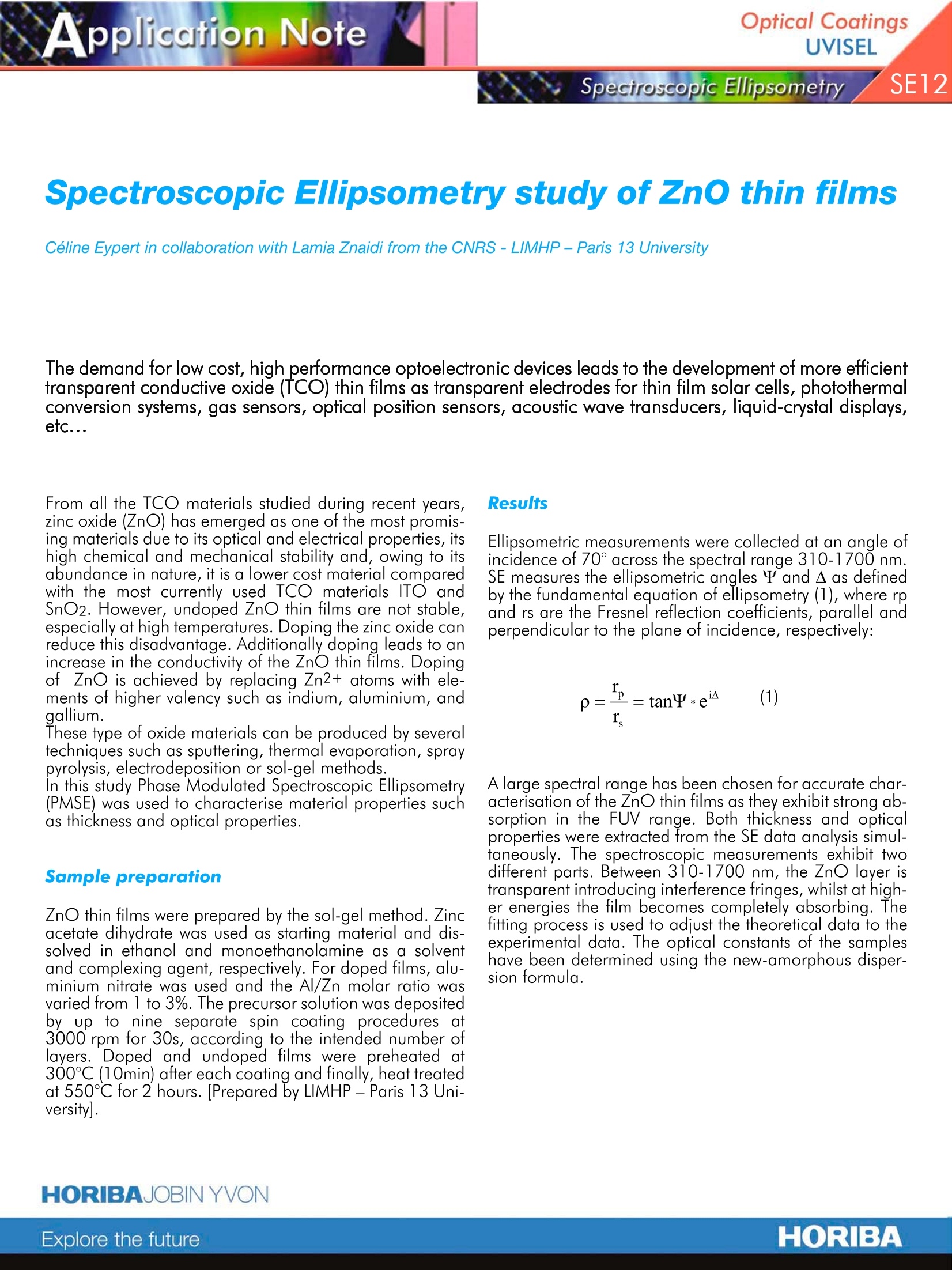
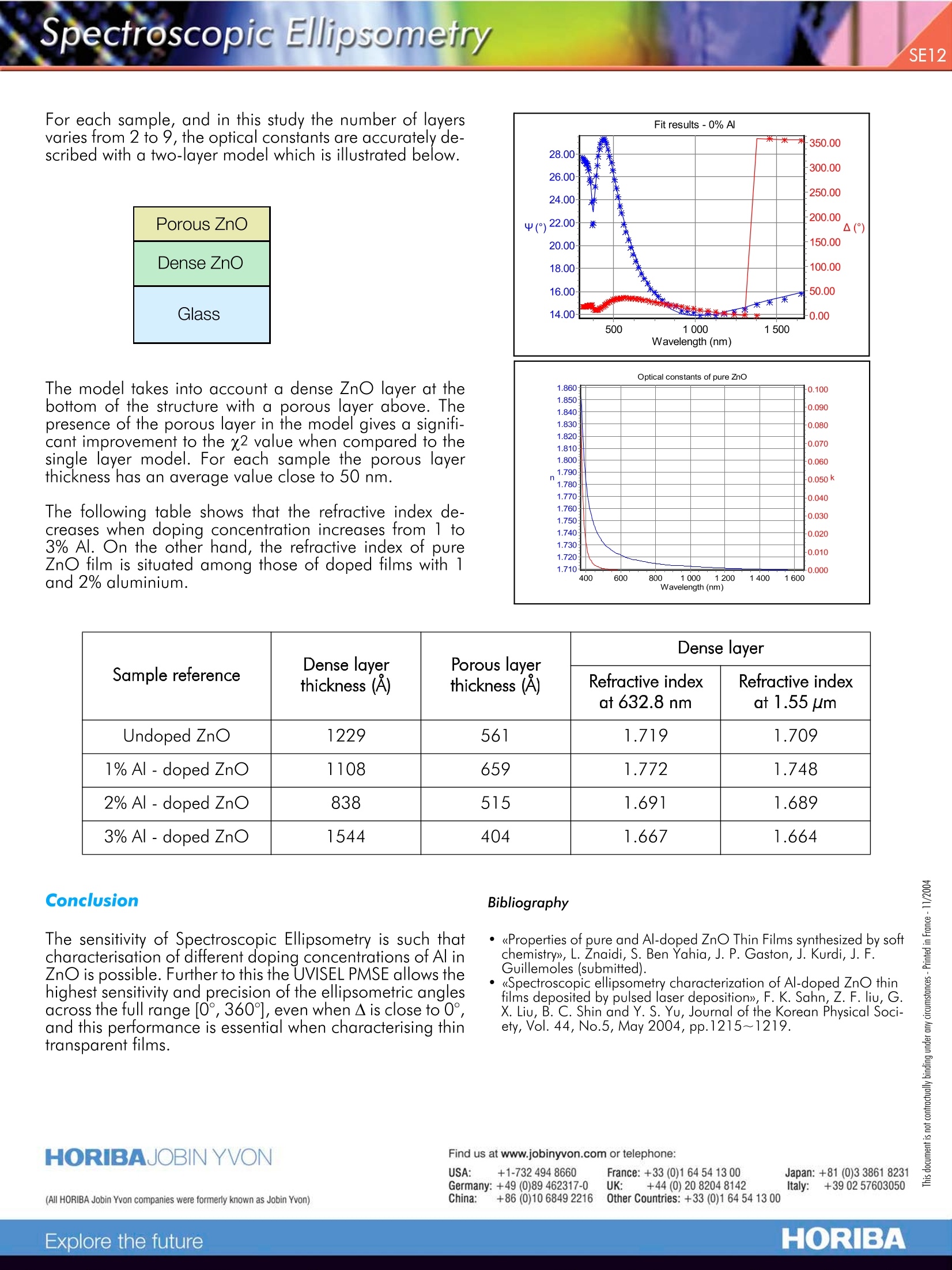
还剩1页未读,是否继续阅读?
HORIBA(中国)为您提供《ZnO薄膜中Al含量、膜厚度检测方案(椭偏仪)》,该方案主要用于建筑玻璃中Al含量、膜厚度检测,参考标准--,《ZnO薄膜中Al含量、膜厚度检测方案(椭偏仪)》用到的仪器有HORIBA UVISEL Plus研究级经典型椭偏仪
推荐专场
相关方案
更多
该厂商其他方案
更多

